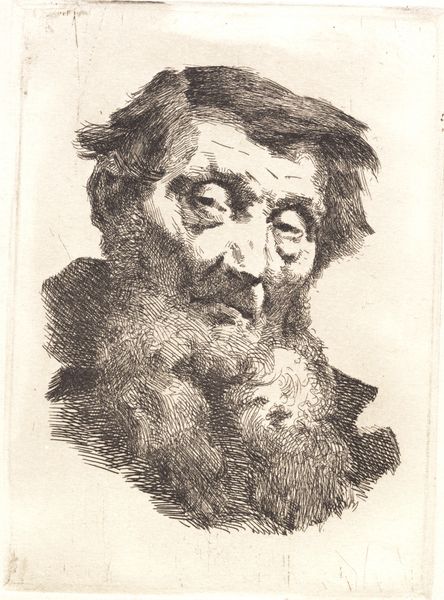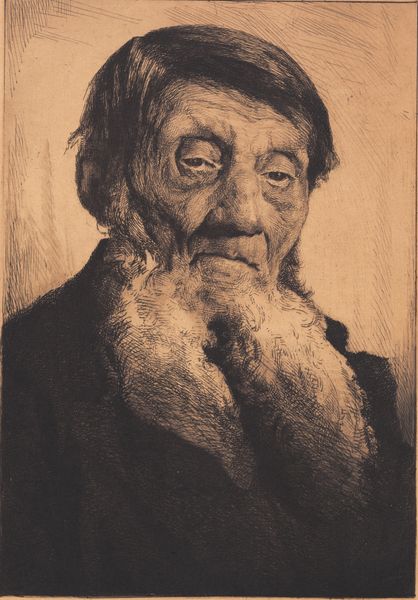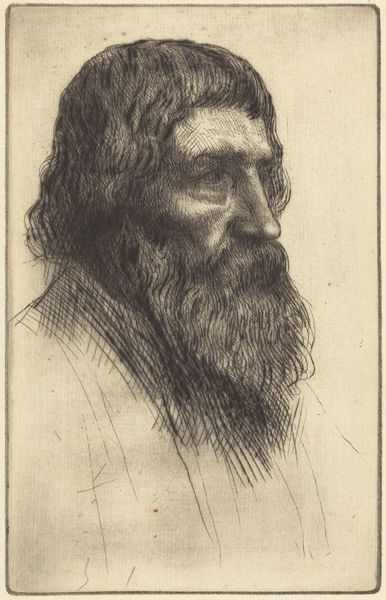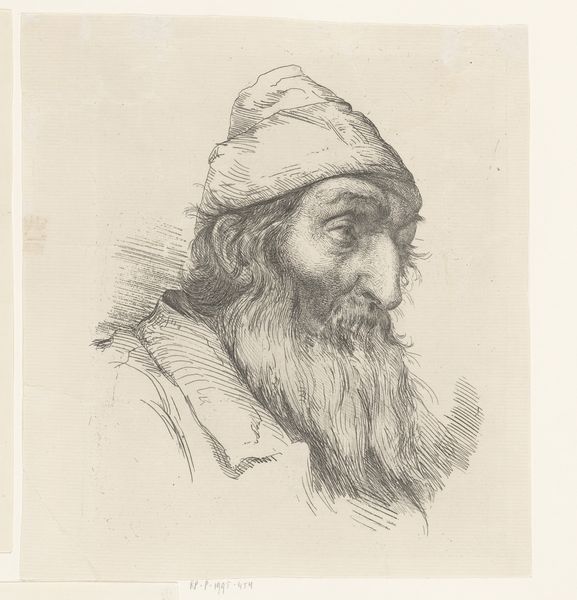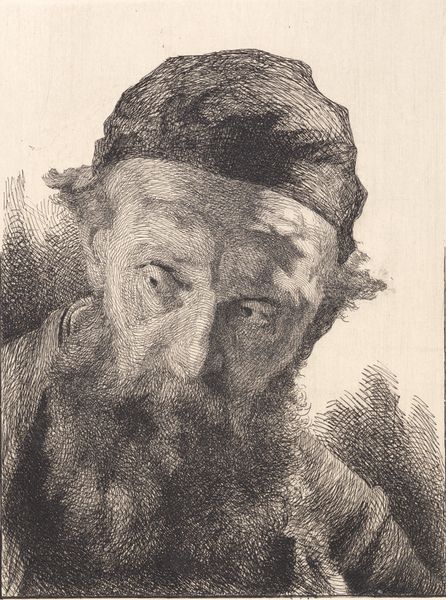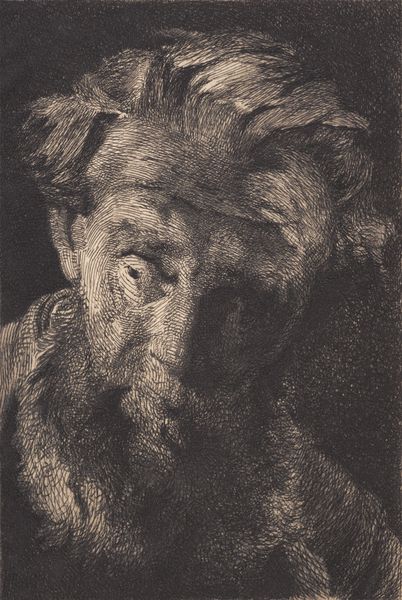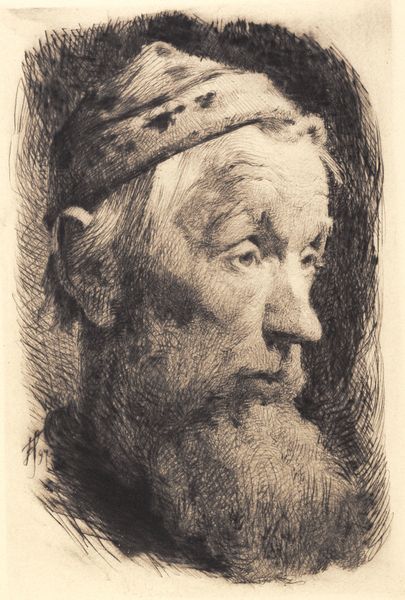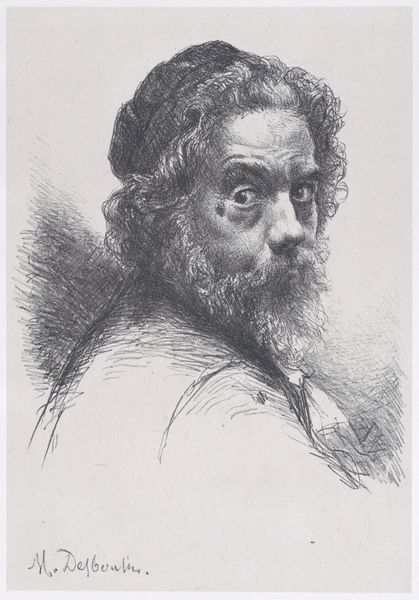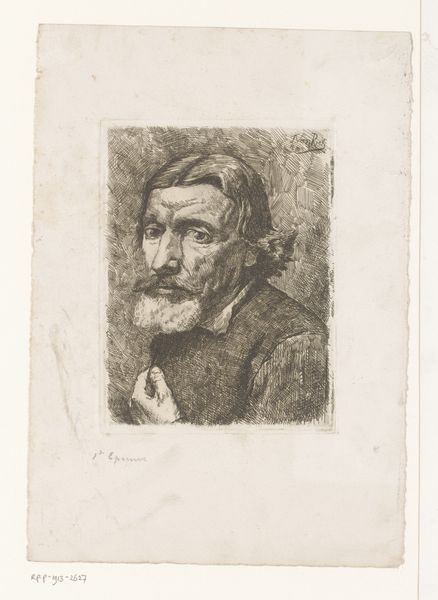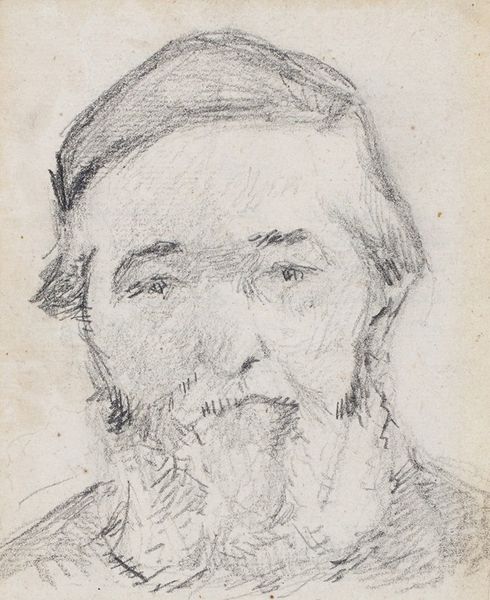
print, etching
#
portrait
# print
#
etching
#
pencil drawing
#
portrait drawing
#
northern-renaissance
#
realism
Dimensions: 147 mm (height) x 108 mm (width) (plademaal)
Curator: Frans Schwartz created this etching in 1885; it is titled "Gammel mand med tvedelt gråt skæg," or "Old man with split grey beard". Editor: Immediately striking, the image resonates with vulnerability, almost fragility. There's a downcast gaze that suggests weariness and hardship. Curator: Realism, yes, and with that realism there's an unvarnished portrayal of aging, where society frequently overlooks elderly men. Note the deeply etched lines indicating lived experience. Is this the artist confronting or perhaps empathizing with this figure? Editor: The beard itself seems almost like a symbolic cascade. It’s visually striking how the artist rendered its textures using complex linework. Considering patriarchal expectations and norms, could the division represent fragmented identity in old age? Perhaps lost roles and purposes? Curator: Certainly a potent reading! The split could be seen as a symbol for societal fracture but could also mirror social attitudes of the time. During this era, there was increasing visibility in society for older citizens living difficult situations due in part to rising poverty levels among the elderly, and decreasing economic security among them, following waves of industrialization. The split thus represents the real conditions they live under! Editor: Given Schwartz’s northern renaissance-influenced style, it's easy to perceive how the visual weight and darkness emphasize themes related to the human condition, invoking images of mortality and even divine judgment. There’s a certain echo of old prophets in the man's face. Curator: I can see that—linking it back to ideas of witnessing hardship and embodying historical memory. A powerful interplay between individual experience and cultural archetypes of older persons living precarious lives! Editor: Precisely, I come away from it with this increased perception of frailty in the face of an indifferent social order. Curator: Yes. Ultimately, this etching becomes a catalyst to rethink historical, social, and cultural positions in respect to marginalized populations of people from Frans’ era.
Comments
No comments
Be the first to comment and join the conversation on the ultimate creative platform.
